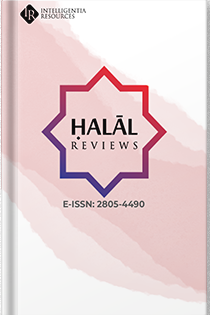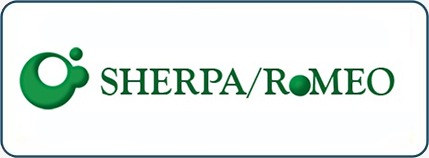The Acceptance of Using Phyllanthus Emblica Lip Essence Oil Among Polytechnic Merlimau Students
DOI:
https://doi.org/10.55265/halalreviews.v2i2.11Keywords:
Phyllanthus emblica, natural, Malacca fruit, lip essence oil, extraction methodAbstract
Most lip products in market are made up of harmful ingredients. The use of parabens like methyl, propyl, butyl, and ethyl extends the shelf life of products and inhibits the growth of microorganisms. The use of this substance is common even though it is known to be dangerous. Melaka Fruit (Phyllanthus emblica), which is grown for landscaping reasons in the State of Melaka, provides more vitamin C than oranges by more than 30 times. Despite all the advantages, the astringent and sour flavor makes it unfit for consumption. Looking at its potential and benefits to lip, this study has been conducted to produce a lip essence oil from Phyllanthus emblica extract. Other objective is to determine the acceptance level of this lip essence oil among Polytechnic Merlimau students. A Likert scale questionnaire was used as research instrument and was distributed to the intended 30 respondents in Melaka, who were all Polytechnic Merlimau students. Descriptive analysis was used to analyze the data, which was obtained using SPSS version 25.0. This lip essence oil had an overall mean score of 4.61, indicating good approval by the respondents. In conclusion, this innovation will assist to prevent environmental pollution, thereby fully using the nutrients existence, given that Melaka fruit are one of the ideal sources of antioxidants and vitamin C. This lip essence oil can increase the acceptance by consumer as it was made using premium ingredients with natural goodness.
References
Aberman, M. (2020). Why Lip Oil Should Be At The Top Of Your Beauty To-Buy List https://www.ipsy.com/blog/what-is-lip-oil
Banno, N., Akihisa, T., Yasukawa, K., Tokuda, H., Tabata, K., Nakamura, Y., Nishimura, R., Kimura, Y., Suzuki, T. (2006). Anti-inflammatory activities of the triterpene acids from the resin of Boswellia carteri. J Eth-nopharmacol, 107:249-253.
Chistova, V. (2018). Prevent Free Radical Skin Damage with these Antioxidants. Retrieved from Eldivia: Retrieved on 10 January 2020 from https://eldivia.com/blogs/health-and-beauty-blog/prevent-free-radical-skin-damage-with-these-antioxidants
Draelos, D. Z. (2000). Cosmetics And Skin Care Products. Dermatologic Clinics, 18(4), 557–559. https://doi.org/10.1016/S0733-8635(05)70206-0
Elhag D.E., Osman H.E., & Dahab A.A. (2015). Investigation of Mercury Content in Cosmetic Products by Using Direct Mercury Analyzer. American Journal of Pharmtech Research. 5(5), 205-212.
Gay, L. R., Mills, G. E. & Airasian, P. (2012). Educational research, Competencies for analysis and applications. 10th edn: Pearson: New York.
Guo, X., Wang, P. (2020). Aroma Characteristics of Lavender Extract and Essential Oil from Lavandula angustifolia Mill. Retrieved on 4 January 2020 from https://www.ncbi.nlm.nih.gov/pmc/articles/PMC7728310/.
Halliwell, B., & Gutteridge, J. M., (2000). Free radicals and antioxidants in the year 2000. A historical look to the future. Annals of the New York Academy of Sciences 899:136-47
Hasmida Mohd Nasir & Siti Hamidah Mohd Setapar (2018) Natural ingredients in cosmetics from Malaysian plants: a review. Sains Malaysiana, 47 (5). pp. 951-959. ISSN 0126-6039
Hussain, M. A., Yunos, M. Y. & Mydin, M. A. O. (2015). Assessment the function of trees as a landscape element: Case study at Melaka waterfront. ResearchGate. Retrieved on 19 February 2020 from https://www.researchgate.net/publication/ 282464577 Assessment_the_function_of_trees_as_a_landscape_elements_Case_study at Melaka waterfront 331158519
Mathai, R. T., Tonse, R., Kalekhan, F., Colin, M. D., Prabhu, H. S., Rao, S., et al. (2015). Amla in prevention of aging. ScienceDirect. 29-35.
Mcleod, S. (2019). Likert scale. Simply Psychology website: https://www.simplypsychology.org/likert-scale.html
Michels, A.J. (2011). Vitamin C and skin health. Retrieved from Oregon State University website: https://lpi.oregonstate.edu/mic/health-disease/skin-health/vitamin-C
Muijs, D. (2011). Doing quantitative research in education with SPSS. 2nd ed: SAGE Publication: London.
Nurliana Nasution et al. (2020) J. Phys.: Conf. Ser. 1471 012066 https://www.researchgate.net/publication/339846639_Application_of_ELECTRE_Algorithm_in_Skincare_Product_Selection
Ojha S., Sinha S., Chaudhuri, S. D., (2019). Formulation and Evaluation of Face Serum Containing Bee Venom and Aloe Vera Gel. Retrieved on 4 January 2020 from https://www.researchgate.net/publication/331158519
Seghal, A. G. (2016). 5 Super Health Benefits of Amla - Indian Gooseberry. Retrieved on 12 January 2020 from Practo: https://www.practo.com/healthfeed/5-super-health-benefits-of-amla-indian-gooseberry-24447/post
Singh, D. J. (2014). Nutrition Facts & Analysis Of Amla (Amalaki), Indian Gooseberry, Emblica Officinalis (Phyllanthus emblica). Retrieved on 12 January 2020 from Aynur Times: https://www.ayurtimes.com/nutrition-facts-analysis-of-amla-amalaki-indian-gooseberry-emblica-officinalis-phyllanthus-emblica/
Weckesser, S., Engel, K., Simon, H. B., Wittmer, A., Pelz, K., Schempp, C.M. (2007) Screening of plant extracts for antimicrobial activity against bacteria and yeasts with dermatological relevance. Phytomedicine, 14:508-516.
Downloads
Published
How to Cite
Issue
Section
License
Copyright (c) 2022 Haniza Ewandi Jong, Wan Hamizah Wan Yusof

This work is licensed under a Creative Commons Attribution-NonCommercial-ShareAlike 4.0 International License.














